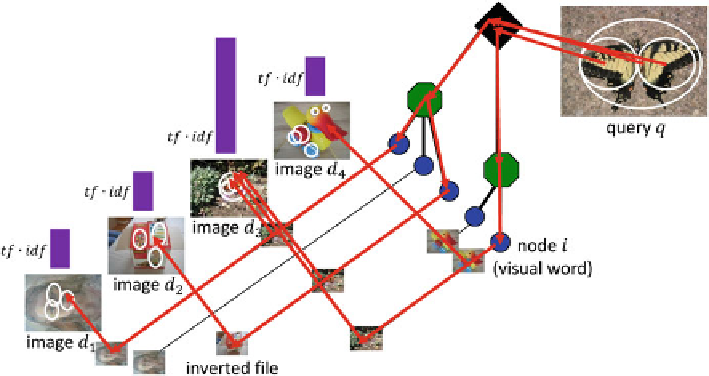Database Reference
In-Depth Information
Fig. 4.4
Image search scheme with visual vocabulary tree. Note that the
white circle
in the image
corresponds to a local descriptor (not an O-query)
for the BoW model to map each local feature, and subsequently, constructing a BoW
representation. By establishing a hierarchical K-means clustering for the codebook,
this algorithm manages to shorten the codebook generation process. Therefore,
it is scalable and efficient for processing large-scale data. Specifically, the CVT
algorithm is able to reduce the following ambiguities:
Sometimes, issuing O-query only in image-based search engines may lead to
too many similar results. The surrounding pixels provide a useful context to
differentiate those results.
Sometimes, the O-query may not have (near) duplicates or exist in the image
database. Issuing only O-query may not lead to any search results. The surround-
ing pixels then can help in providing a context to search for the images with
similar backgrounds.
Hierarchically built K-means clustering for codebook generation makes the
retrieval process efficient, wherein each queried local feature only goes through
one particular branch at the highest level and its sub-branches instead of going
through the entire codebook.
The CVT-based visual search method encodes different weights of term fre-
quencies inside and outside the O-query. For off-line image indexing, SIFT local
descriptors are extracted as a first step. Since our target database is large-scale, an
efficient hierarchical K-means is used to cluster local descriptors and build the CVT.
Then, the large-scale images are indexed using the built CVT and the inverted file
mechanism, which is to be introduced in the following.

Search WWH ::

Custom Search